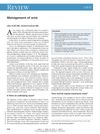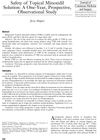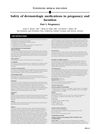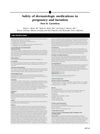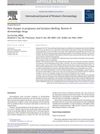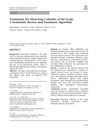Safety of Common Medications for Treating Dermatology Disorders in Pregnant Women
September 2013
in “
Current Dermatology Reports
”
topical corticosteroids systemic corticosteroids ketoconazole clotrimazole penicillin fluoroquinolones macrolides tetracyclines acyclovir methotrexate pimecrolimus tacrolimus cyclosporine biologic immune modifiers antihistamines chlorpheniramine loratadine topical retinoids systemic retinoids anthralin UVB phototherapy coal tar systemic PUVA hydroxychloroquine steroids Nizoral Lotrimin antibiotics Cipro Zithromax doxycycline Zovirax Trexall Elidel Protopic Neoral biologics Benadryl Claritin retinoids Dovonex phototherapy PUVA Plaquenil
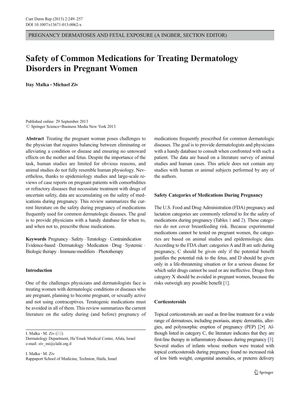
TLDR Some skin medications are safe for pregnant women, but others pose risks or should not be used.
The document from 2013 summarized the safety of dermatological medications during pregnancy, using FDA pregnancy categories to assess risk. Topical corticosteroids (category C) were generally safe, while systemic corticosteroids posed risks such as low birth weight and orofacial clefts. Topical antifungals like ketoconazole (category C) and clotrimazole (category B) were safe, but systemic use of ketoconazole was not recommended. Penicillin (category B) was safe for bacterial infections, while fluoroquinolones (category C) and macrolides (category B) had varying safety profiles. Tetracyclines (category D) were contraindicated. Acyclovir (category B) was safe for viral infections, while treatments for viral warts and scabies had different safety levels. Methotrexate (category X) was contraindicated, while pimecrolimus, tacrolimus (category C), and cyclosporine (category C) were used with caution. Biologic immune modifiers had limited safety data. Antihistamines like chlorpheniramine and loratadine (category B) were safe, while the safety of others was unclear. Topical and systemic retinoids were contraindicated due to teratogenicity. Anthralin and UVB phototherapy were safe, while coal tar and systemic PUVA were not recommended. Hydroxychloroquine was not categorized but used safely. The document highlighted the need for more research on the safety of dermatologic medications during pregnancy due to the reliance on case reports and reviews for current knowledge.
